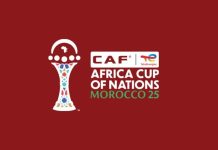The final draw for the 2026 FIFA World Cup will take place on December 5 in Washington, setting the stage for the tournament’s first-ever 48-team format. FIFA laid out the official procedures this week, revealing how the qualified nations will be divided into 12 groups of four.
Morocco, following a strong showing in recent years, has secured a spot in Pot 2-placing it among some of the world’s most competitive national teams outside the top tier. Fellow Pot 2 nations include Croatia, Colombia, Senegal, Switzerland, and Japan. This seeding is based on the latest FIFA/Coca-Cola rankings released on November 19, 2025.
As tournament co-hosts, the United States, Canada, and Mexico are automatically placed in Pot 1 and have already been assigned positions A1, B1, and D1, respectively, to streamline logistics. They’ll be joined in the top pot by some of football’s elite: Spain, Argentina, France, England, Brazil, Portugal, the Netherlands, Belgium, and Germany—rounding out a formidable group of seeded teams.
The draw will proceed sequentially from Pot 1 to Pot 4. The final spots in Pot 4 will be filled by the winners of the upcoming European playoffs and the intercontinental playoff tournament.
Strict geographical rules will be enforced to maintain diversity in the groups. Each group can include only one team from each confederation—except for UEFA. Given Europe’s high representation with 16 qualified teams, groups may contain up to two European nations, with at least one required in each group.
To ensure competitive balance deeper into the tournament, FIFA has decided to separate the top four ranked teams into opposite halves of the knockout bracket. As a result, Spain (ranked 1st) and Argentina (2nd) will be on different sides of the draw, as will France (3rd) and England (4th)—assuming they all finish first in their respective groups.
The full tournament schedule, including match dates, venues, and kickoff times, will be released the day after the draw, on December 6. FIFA has promised to account for travel demands and rest periods, while also optimizing global broadcast visibility, despite the time zone differences across the host cities in the U.S., Canada, and Mexico.





